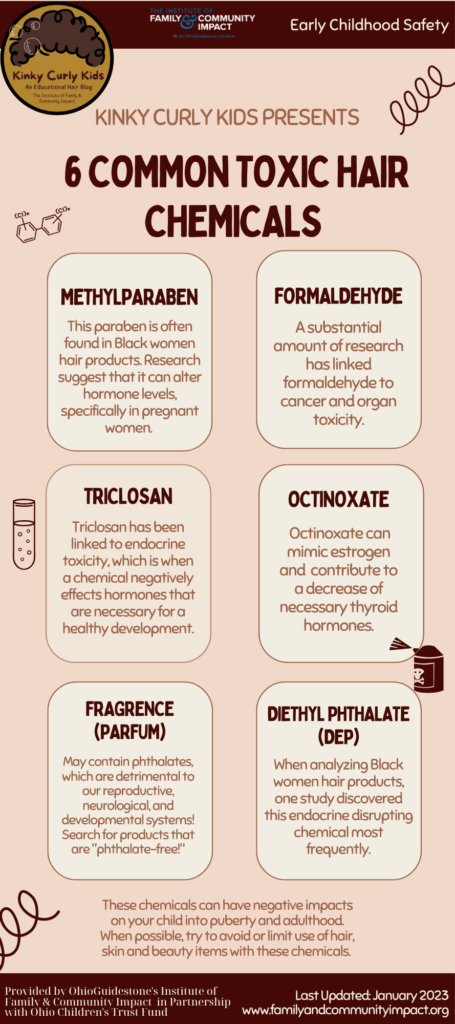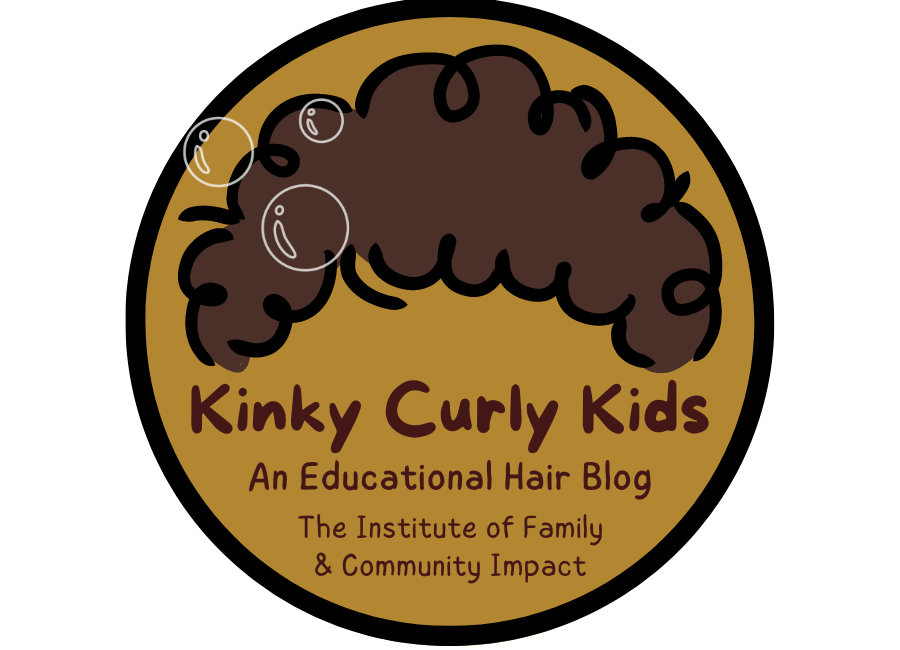
Welcome to the Kinky Curly Kids Hair Blog (KCK Blog)!
Our Kinky Curly Kids Hair Blog will help families limit childhood exposure to neuroendocrine disrupting chemicals in skin and haircare products. Our initiative will also help counter harmful experiences that can be tied to maintaining and caring for kinky and curly hair. This blog will be a safe space to learn about proper care, maintenance, and affirmation of young (newborn to 8 years old) Black children’s hair.
KCK Blog Mission:
The Institute of Family and Community Impact envisions healthy families and communities with limited childhood adversity and negative determinants of health. During early childhood, exposure to certain chemicals within the air, toys, food and even skin and hair care products can have negative impacts on brain and body development, health, learning and relationships into adolescence and even adulthood! We want to empower and educate caregivers to create both healthy and positive experiences, with their children, that can be passed down to future generations.
Why we created the KCK blog:
Our Kinky Curly Hair Blog grew from our larger early childhood safety project with the Ohio Children’s Trust Fund (OCTF) that provides families with information and products that are safer for young children such as safe sleep items, bottles and sippy cups, food serving items, and now hair care products (contact us to learn more about this project). Ongoing work on topics like adverse childhood experiences (ACEs) continually remind us of the importance and impact of environmental safety, and that prevention practices must include short- and long-term efforts to prevent negative health and development outcomes starting in early childhood and beyond.

See the PDF Infographic on 6 Common Toxic Hair Chemicals
Why do we need this?
In the U.S., Black girls are exposed to hair oils and perming products during childhood more than any other racial group. Increased usage of these products has been found to alter puberty in Black girls, resulting in an early menarche (period). Early menarche is alarming because it is a risk factor for breast cancer. Black women in the U.S. have the highest rates of dying from breast cancer.
Black girls ages 6-11 have double the mono-ethyl phthalate (MEP) levels compared to children of other racial groups. MEP has been linked to both sperm and DNA damage.
In Cincinnati, OH, one study discovered that Phthalate exposure in Black children diminished their IQ by 7 points, compared to white children.
Why should you come back for more KCK blog posts?
The purpose of this blog is to create a safe space for caregivers to visit often to learn more about the chemicals in our hair products, proper care, maintenance, and affirmation of Black children’s hair. (Aimed for fathers with Black and bi-racial children ages newborn to 8 years old.)
Blog Authors: Kiliyah Mair and Raven Lipford, Research Assistants and project leads on ECSI (Early Childhood Safety Initiative).




